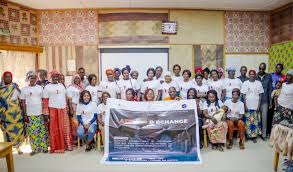News
Africa-Based Organizations Receive Funding Boost to Launch Creative Environmental Outreach Projects Using Pulitzer Journalism

If you’re part of a local group in Africa passionate about climate change, environmental protection, and storytelling, there’s exciting news.
The Pulitzer Center is back with its Africa Climate and Environment (ACE) Micro Grants for 2025—a program that helps community-driven initiatives bring climate journalism to life in fresh, creative ways.
With grants ranging from $2,500 to $3,000, this initiative is all about using Pulitzer Center-supported journalism to spark awareness and drive change across communities.
And the best part? You don’t need to be a big organization—just a passionate, well-connected one.
What the ACE Micro Grants Are All About
Launched through the Pulitzer Center’s Africa Outreach Program, the ACE Micro Grants are now in their third year.
The goal is to help African organizations create projects that highlight pressing environmental topics—things like deforestation, ocean conservation, labor conditions impacted by climate change, and more.
These aren’t typical research or reporting grants.
The focus is on community-led outreach that actively engages people and gets them talking, thinking, and doing something about environmental issues—whether it’s through exhibitions, storytelling projects, forums, or even performances.
Key Focus Areas You Can Choose From
Each project must center around one of the Pulitzer Center’s supported themes and include at least one of their journalism stories. Here’s where you can focus your efforts:
-
Climate and Labor: Dig into how climate change is impacting jobs, safety, and workers’ rights.
-
Rainforest: Explore biodiversity loss, Indigenous rights, and the cost of energy transitions.
-
Ocean: Highlight coastal threats like overfishing, erosion, and rising sea levels.
Your project needs to clearly tie into Pulitzer-supported journalism and make it relatable to your audience.
What Kinds of Projects Are They Looking For?
Think bold, creative, and grassroots. If your idea gets people involved and thinking critically, you’re on the right track.
Some examples of eligible projects include:
-
Public forums with journalists, local leaders, and residents
-
Art shows or film screenings that feature environmental themes
-
Podcasts or radio shows focused on local climate impacts
-
Community storytelling events driven by lived experiences
Just remember: these projects shouldn’t be based in schools or universities, and they should be aimed at people aged 25 to 45—young adults and professionals who are often missed in traditional outreach.
What’s Not Eligible for Funding?
This grant isn’t meant for everything. Here’s what won’t be funded:
-
Projects not connected to Pulitzer journalism
-
School-based or academic-focused projects
-
Journalism training programs
-
General operations or internal capacity-building
-
Political lobbying or campaign work
-
Efforts focused mainly on creating new journalism content
Basically, if it’s not rooted in community outreach and doesn’t make existing journalism more accessible and actionable, it’s likely not a fit.
Who Can Apply?
Only Africa-based organizations are eligible. This includes:
-
Youth-led grassroots groups
-
Civil society organizations or networks
-
Community coalitions in climate, labor, or civic activism
To apply, you’ll need to show that you’ve worked with your intended audience before, have a way to manage the grant responsibly, and have connections to the community you’re hoping to impact.
What Will Make Your Application Stand Out?
The selection committee is looking for projects that:
-
Integrate journalism well: Use Pulitzer Center stories and involve journalists in your project if possible.
-
Reach the right audience: Specifically those aged 25–45 and not in school.
-
Drive real change: Your proposal should show clear goals and how it will make an impact in the short term.
-
Think outside the box: Creative approaches and unique formats will go a long way.
Key Dates You Need to Know
Here’s a quick look at the timeline:
-
Applications open: March 30 – April 30, 2025
-
Selection process: May 2 – 20, 2025
-
Grants awarded: May 23, 2025
-
Project briefings: May 23 – 30, 2025
-
Project implementation: June – August 2025
-
Wrap-up and reporting: September 1 – 30, 2025
What to Include in Your Application
Your application needs to be clear, convincing, and community-centered.
Make sure to include:
-
A 400-word summary explaining your idea, why it matters, what you’ll do, and what impact you expect
-
A description of who your audience is and how you’ll reach them
-
A timeline for your activities
-
A preliminary budget
-
The lead applicant’s CV and a letter of recommendation
-
Proof that you’ve worked with or are part of the community you want to serve
-
A signed consent letter if you’re working with Indigenous or traditional communities
Ready to Apply?
If you’ve got an idea that can turn powerful journalism into local action, this is your moment.
But don’t wait—applications close on April 30, 2025.
News
KVK-Tech Warning Letter: What It Means for Pharma Compliance

What is a Warning Letter and Why Does It Matter?
A warning letter from the U.S. Food and Drug Administration (FDA) is a serious notice sent to companies that fail to comply with federal regulations. In the pharmaceutical industry, where drug safety and patient health are directly at stake, KVK-Tech Warning Letter carry even more weight. They highlight gaps in compliance and require swift corrective actions to avoid more severe penalties, such as product recalls, import bans, or even plant shutdowns.
The Case of KVK-Tech
KVK-Tech, a pharmaceutical manufacturer, became the subject of close scrutiny in 2020 when the FDA issued two separate warning letters. Both letters exposed significant lapses in manufacturing practices, signaling deep-rooted compliance issues rather than isolated mistakes.
The First Warning Letter – February 11, 2020
The first warning letter stemmed from an inspection in April 2019. The FDA identified major violations of current Good Manufacturing Practice (CGMP) regulations. Among the most concerning were failures in validating test methods. KVK-Tech had not adequately established the accuracy, sensitivity, specificity, or reproducibility of its laboratory testing. Without this validation, test results could not be trusted to ensure the safety and effectiveness of its products.
Another alarming issue involved impurity testing of phentermine HCL capsules. The company failed to properly identify and integrate certain chemical peaks during testing. This oversight meant that potentially harmful impurities went undetected in at least one batch of capsules, which still reached the market. Such a failure undermines the very purpose of CGMP standards, which are designed to safeguard patients.
The Second Warning Letter – October 8, 2020
The second warning letter followed another inspection in 2020. This time, the focus shifted to cleaning validation procedures. The FDA found that KVK-Tech had not validated the cleaning of certain non-dedicated equipment, such as slat counters. Without proper cleaning validation, there was a risk of cross-contamination between drug products.
In addition, the company had not tested the most difficult-to-clean areas of its equipment, such as the insides of slat cavities. Overlooking these areas increased the possibility of residue buildup that could compromise product quality. Together, these findings highlighted systemic weaknesses in the company’s quality control processes.
Why These Letters Matter
The FDA’s concerns with KVK-Tech went beyond technical violations. The letters pointed to broader issues with data integrity and company oversight. In some cases, data handling practices allowed changes to be made without adequate review or documentation. Such gaps raise serious concerns about whether test results can be trusted.
Repeated violations also indicated that earlier warnings had not led to meaningful changes. When a company fails to respond effectively to regulatory concerns, it signals a weak compliance culture. For pharmaceutical manufacturers, this not only risks further enforcement actions but also damages trust with healthcare providers and patients.
Key Lessons for the Industry
The KVK-Tech case offers valuable lessons for other pharmaceutical companies and manufacturers in regulated industries:
-
Ensure test method integrity: All laboratory methods must be rigorously validated for accuracy, sensitivity, and reproducibility.
-
Investigate anomalies thoroughly: Any unusual results, such as unexpected impurities, should trigger in-depth investigations rather than being overlooked.
-
Protect data integrity: Systems should track all data changes, restrict unauthorized access, and maintain complete audit trails.
-
Prioritize cleaning validation: Procedures must account for worst-case scenarios, including the hardest-to-clean equipment surfaces.
What KVK-Tech Could Have Done Differently
To avoid these issues, KVK-Tech could have taken several proactive steps. First, developing a more comprehensive cleaning validation program would have ensured that all potential contamination risks were addressed. Second, investing in robust laboratory practices, including the validation of testing methods, would have provided greater confidence in product safety.
The company could also have benefited from stronger IT safeguards to protect data, such as restricted access and mandatory audit trails. Finally, engaging independent consultants for external audits might have helped identify weak points and implement corrective measures before FDA intervention became necessary.
ALSO READ: Why vRealize Infrastructure Navigator is Essential for IT Infrastructure Management
Building a Culture of Compliance
At its core, compliance is not just about meeting FDA requirements—it is about building a culture that prioritizes patient safety and product quality. For companies like KVK-Tech, this means going beyond basic regulations and instilling values of accountability and transparency at every level of operation.
When compliance becomes part of a company’s culture, it not only reduces the risk of regulatory action but also enhances its reputation in the market. Trust from regulators, healthcare professionals, and patients is built on consistent quality and a demonstrated commitment to safety.
Conclusion
The KVK-Tech warning letters serve as a cautionary tale for the pharmaceutical industry. They show how lapses in testing validation, cleaning procedures, and data management can escalate into significant regulatory problems. More importantly, they remind us that these failures ultimately put patients at risk.
For manufacturers, the lesson is clear: staying proactive, thorough, and transparent is not just about avoiding FDA penalties. It is about safeguarding public health, protecting company reputation, and ensuring long-term success in a highly regulated industry.
FAQs
What is an FDA warning letter?
An FDA warning letter is an official notice highlighting serious violations of federal regulations. It serves as a demand for corrective action to prevent further enforcement measures.
Why did KVK-Tech receive FDA warning letters?
KVK-Tech received two warning letters in 2020 due to failures in test method validation, cleaning procedures, and data integrity, all of which raised concerns about product safety.
What risks do companies face after a warning letter?
Companies may face penalties such as import bans, product recalls, or facility shutdowns if they do not address the violations outlined in an FDA warning letter.
How can pharmaceutical companies avoid warning letters?
They can avoid warning letters by rigorously validating test methods, ensuring thorough cleaning procedures, maintaining strong data integrity systems, and responding quickly to regulatory findings.
What lessons can the industry learn from KVK-Tech?
The key lessons are the importance of compliance, the need for robust quality systems, and the value of creating a company-wide culture focused on safety and accountability.
News
OneWorldColumns.org: A Platform for Global Voices and Ideas

What is OneWorldColumns.org?
OneWorldColumns.org is an independent online platform that publishes commentary on global issues, written by diverse contributors from around the world. It focuses on human rights, politics, culture, and social justice, offering perspectives that often challenge mainstream narratives. The site is built to amplify voices that might otherwise go unheard.
A Clear Definition of the Platform
OneWorldColumns.org is a digital space where writers share informed opinions on global affairs. Unlike news outlets that stick to reporting, it focuses on analysis and commentary. Readers gain access to thoughtful reflections that connect local struggles to wider international issues.
Why the Website Stands Out in Global Discourse
The platform doesn’t chase headlines. Instead, it highlights deeper stories that mainstream media often overlooks. By doing this, it fills gaps in coverage and sparks conversations on fairness, justice, and representation. Readers trust it for perspectives that aren’t filtered by commercial or political interests.
Who Contributes to OneWorldColumns.org?
The site features work from academics, activists, journalists, and community writers. Each contributor brings a distinct voice shaped by lived experience. This mix of expertise and personal perspective makes the content relatable yet credible. Together, they form a chorus of global voices aimed at sparking awareness and dialogue.
You Might Also Like: Techcraze
Why Was OneWorldColumns.org Created?
OneWorldColumns.org was created to provide a space for independent commentary on global issues, giving writers freedom to address topics that mainstream outlets often overlook. Its purpose is to challenge narrow narratives, amplify marginalized perspectives, and encourage readers to think critically about world events.
Historical Background and Motivation
The idea for OneWorldColumns.org grew out of frustration with limited perspectives in traditional media. Early contributors wanted a platform where writers could address issues of justice, inequality, and cultural identity without editorial pressure. The site emerged as a response to global events that demanded independent voices.
Addressing Gaps in Mainstream Media
Mainstream outlets often filter content through political or corporate interests. This leaves important issues underreported. OneWorldColumns.org steps into this gap by publishing commentary that looks beyond surface-level coverage. It gives context, connects stories across regions, and sheds light on struggles that rarely make front-page news.
Core Mission and Values
At its core, OneWorldColumns.org values fairness, openness, and inclusivity. The platform aims to support voices that highlight inequality, promote justice, and question power structures. Its mission is not just to inform but to spark thoughtful conversations that lead to awareness and, eventually, social change.
How Does OneWorldColumns.org Work?
OneWorldColumns.org works as an open platform where contributors submit articles on global issues, which are then reviewed for clarity, relevance, and fairness. Writers come from different backgrounds, but all share the goal of offering meaningful commentary. The platform organizes these pieces by themes, making it easy for readers to explore diverse perspectives.
Submission and Contribution Process
Writers submit their articles directly through the platform. Submissions are expected to be original, focused, and tied to global issues. Contributors don’t need to be professional journalists. The platform values lived experiences as much as academic expertise, allowing both community members and professionals to have a voice.
Editorial Standards and Guidelines
Every piece goes through an editorial check. Editors review for accuracy, respectful tone, and balanced arguments. They avoid censorship but ensure that published content aligns with the site’s mission of fairness and inclusivity. This process keeps the platform credible while still leaving room for strong, personal perspectives.
Topics and Themes Featured on the Platform
The platform covers a wide spectrum: politics, human rights, environment, culture, and global justice. Articles often connect local experiences to worldwide challenges. This variety ensures readers always find relevant and thought-provoking commentary that sparks reflection on issues beyond their immediate environment.
Who Reads OneWorldColumns.org?
OneWorldColumns.org attracts a diverse global readership. Its audience includes academics, activists, educators, and everyday readers who want perspectives beyond mainstream outlets. The platform appeals to those interested in justice, politics, and culture, creating a space where different backgrounds meet around shared curiosity about world affairs.
Global Audience Demographics
Readers come from across continents, with a strong presence in Europe, Asia, and the Americas. The audience skews toward people who actively seek independent commentary. Many readers already follow alternative news and are drawn to the platform for its focus on fairness, inclusivity, and open discussion of sensitive issues.
Educators, Researchers, and Activists
Teachers and scholars use the platform as a resource for debates, lectures, and coursework. Activists often draw insights from its commentary to strengthen campaigns or raise awareness in their communities. By combining analysis with firsthand perspectives, the site becomes a bridge between academic study and on-the-ground advocacy.
Everyday Readers Seeking Alternative Perspectives
Not every reader is a professional. Many are ordinary people tired of hearing the same headlines recycled. These readers look for fresh viewpoints, personal stories, and commentary that connects their concerns to global realities. The platform gives them a sense of inclusion in larger conversations.
Key Themes Covered on OneWorldColumns.org
OneWorldColumns.org focuses on themes that matter globally: human rights, governance, culture, climate, and conflict. Each theme highlights overlooked issues and provides commentary that connects personal stories to broader global contexts. These topics form the backbone of the platform, making it a trusted source for meaningful perspectives.
Human Rights and Social Justice
Articles often spotlight struggles for equality, freedom, and dignity. Writers address discrimination, labor rights, and social movements. The goal is to amplify voices that challenge oppression and spark awareness of injustices that may otherwise go unnoticed.
Politics and Governance
The platform examines political systems and decision-making processes. Writers explore corruption, policy gaps, and leadership challenges. This helps readers understand how governance affects ordinary lives, whether it’s through laws, elections, or international agreements.
Culture, Media, and Representation
Cultural identity, media framing, and representation in art or news are frequent themes. Articles explore how narratives are shaped and whose voices dominate public conversations. This section often critiques stereotypes while highlighting diverse cultural contributions.
Environment and Climate Issues
Climate change, deforestation, and environmental justice appear regularly. Writers connect local environmental challenges to global crises. The platform pushes awareness of how communities worldwide face the realities of climate shifts and ecological degradation.
Peace and Conflict Studies
This theme addresses war, conflict resolution, and post-conflict rebuilding. Writers share insights on peace negotiations, grassroots reconciliation, and the human cost of conflict. These discussions remind readers of the urgent need for dialogue over division.
Why Does OneWorldColumns.org Matter Today?
OneWorldColumns.org matters today because readers increasingly seek independent voices, honest discussions on inequality, and platforms that challenge one-sided narratives. It helps people question surface-level reporting and look deeper into global issues. The site provides perspectives that support awareness, fairness, and critical thought in a world crowded with filtered media.
Rising Demand for Independent Voices
People are turning away from outlets tied to corporate or political interests. Independent platforms like OneWorldColumns.org meet this demand by offering unfiltered commentary. Readers know the voices here aren’t controlled by advertisers or power groups, which makes the platform a trusted alternative in today’s crowded media space.
Building Awareness on Global Inequalities
The site regularly highlights injustices tied to wealth, gender, race, and geography. By connecting these issues across regions, it shows how inequality is a global challenge, not just a local one. Readers gain perspective on how different struggles are linked, sparking empathy and broader understanding.
Encouraging Critical Thinking Among Readers
OneWorldColumns.org doesn’t hand readers ready-made answers. Instead, it offers perspectives that make them stop and think. By contrasting personal experiences with global contexts, the platform pushes readers to question assumptions and examine the forces shaping the world around them.
Comparisons with Other Independent Media Platforms
OneWorldColumns.org differs from casual blogs and mainstream media because it blends independence with editorial standards. Unlike blogs, it maintains structured review processes, and unlike big outlets, it isn’t tied to corporate agendas. At the same time, it shares common ground with other alternative platforms in amplifying diverse global perspectives.
How OneWorldColumns.org Differs from Blogs
Blogs often serve as personal diaries or niche spaces, with minimal editorial checks. OneWorldColumns.org, however, focuses on public commentary backed by review and credibility. Writers aren’t just sharing opinions—they’re contributing to a pool of informed analysis that connects to bigger conversations about society and politics.
Comparison with Mainstream Media Outlets
Mainstream media tends to prioritize commercial interests, headlines, and advertiser influence. OneWorldColumns.org breaks from that by putting voices ahead of profit. Its pieces may lack the resources of large outlets but carry the weight of authenticity and independence, which appeals to readers seeking genuine perspectives.
Similarities to Other Alternative News Platforms
Like many independent media projects, OneWorldColumns.org values inclusivity, fairness, and global awareness. It shares with them the goal of publishing commentary that sparks debate and promotes awareness. However, its focus on reflective essays and global connections gives it a distinctive character within the broader landscape of alternative media.
Challenges Faced by OneWorldColumns.org
OneWorldColumns.org faces challenges common to independent platforms: securing sustainable funding, competing in an overcrowded digital space, and maintaining credibility. These hurdles test its ability to keep publishing diverse voices while staying trusted by readers. Despite obstacles, the platform continues to push for fairness and inclusivity in global commentary.
Funding and Sustainability
Independent platforms rarely have deep pockets. OneWorldColumns.org relies on donations, volunteer work, and occasional grants. Without steady financial support, long-term growth is tough. Balancing costs with the need to remain independent keeps funding a constant concern for the platform’s future.
Competition in the Digital Media Space
The internet is crowded with blogs, podcasts, and media outlets all fighting for attention. Standing out in this environment is hard. OneWorldColumns.org must work to keep readers engaged without the marketing budgets or visibility that big media companies enjoy.
Ensuring Credibility and Trustworthiness
Trust is everything for independent commentary. OneWorldColumns.org tackles this by sticking to clear editorial checks, transparent authorship, and a strong commitment to fairness. In an era of misinformation, these efforts help it keep the trust of its readers while defending its independence.
How to Contribute or Get Involved
OneWorldColumns.org thrives on community participation. Whether you’re an aspiring writer, a dedicated volunteer, or simply someone who wants to amplify independent voices, there are many ways to get involved. By contributing articles, offering support, or sharing content online, you can help sustain the platform’s mission of promoting global justice and dialogue.
Writing and Submitting Articles
Writers are at the heart of OneWorldColumns.org. Contributors can share their insights on human rights, politics, culture, or environmental issues. Clear guidelines are available for submissions, ensuring diverse voices maintain quality and credibility. Aspiring authors gain a chance to reach a global audience with meaningful commentary.
Volunteering and Supporting the Platform
Beyond writing, volunteers play a key role in editing, outreach, and fundraising. Supporters can also contribute financially through donations or sponsorships. Every contribution—big or small—helps sustain the platform’s independence and ability to continue amplifying underrepresented voices.
Sharing Content Across Social Channels
Readers who share articles on platforms like Twitter, LinkedIn, or Facebook help expand OneWorldColumns.org’s reach. Digital amplification not only drives awareness but also strengthens the visibility of global issues often overlooked by mainstream media. A simple share or repost can extend the impact of independent voices worldwide.
Future of OneWorldColumns.org
The future of OneWorldColumns.org lies in growth, collaboration, and deeper engagement. As the platform adapts to digital trends, builds global partnerships, and fosters stronger connections with readers, it aims to remain a leading hub for independent voices. Its evolution promises greater influence in shaping global awareness and dialogue.
Expanding Digital Reach
OneWorldColumns.org plans to leverage new technologies, from podcasts to multimedia storytelling, to reach younger and more diverse audiences. Enhancing SEO, mobile compatibility, and social media presence ensures the platform remains accessible and relevant in the fast-paced digital era.
Potential Collaborations with Global Networks
The platform seeks partnerships with international NGOs, academic institutions, and grassroots movements. These collaborations would not only broaden its reach but also enrich its content with diverse expertise and real-world perspectives on pressing global issues.
Strengthening Community and Reader Interaction
Future growth also means fostering stronger bonds with readers. Interactive features such as forums, live discussions, or contributor spotlights can help transform the site into a participatory community, rather than just a publishing space. This encourages dialogue and ensures readers feel part of a global movement.
Final Thought
OneWorldColumns.org stands as a crucial space where diverse, independent voices thrive. By offering thoughtful commentary and highlighting global challenges, it empowers readers to think critically. Understanding why such platforms matter helps audiences engage more deeply with issues shaping our world.
A Platform that Gives Space to Diverse Voices
The strength of OneWorldColumns.org lies in its inclusivity. Writers from various cultural, political, and social backgrounds contribute, creating a tapestry of perspectives. This diversity ensures readers are exposed to ideas and viewpoints often absent from mainstream narratives.
Why Readers Should Care About Independent Commentary
Independent commentary fosters awareness beyond headlines. By consuming such content, readers avoid one-dimensional reporting and gain a deeper grasp of global inequalities, power dynamics, and human rights concerns. It empowers individuals to form informed opinions and engage more meaningfully in social and political discussions.
How it Shapes Conversations About the World
Through thought-provoking analysis, OneWorldColumns.org drives conversations that ripple beyond the platform. Educators, activists, and everyday readers use its insights to challenge biases, spark debates, and inspire action. In this way, the site not only informs but also shapes how global issues are understood and addressed.
News
Rafael Nadal Opens Up About His Decision to Retire and His Lack of Nostalgia for Tennis During Laureus Awards in Madrid

At the Laureus World Sport Awards in Madrid, Rafael Nadal shared a surprising revelation that left many fans curious.
Despite being one of the greatest tennis players of all time, the 38-year-old Spaniard admitted that he doesn’t miss the sport at all, even after retiring last year.
No Regrets and No Nostalgia
Nadal, who secured 22 Grand Slam titles during his illustrious career, including a remarkable 14 victories at Roland Garros, retired after his final match at the Davis Cup in November.
When asked if he missed tennis, Nadal responded bluntly: “The truth is that I don’t miss tennis. Zero. I don’t miss it at all.”
However, he quickly clarified that his feelings weren’t due to any bitterness or frustration with the game.
“It’s not because I finished tired of tennis or fighting against tennis,” he explained.
Instead, Nadal emphasized that he ended his career content, saying, “I finished my career happy, and if I could have, I would have carried on, because I loved what I was doing.”
The Reality of Physical Limits
Despite his deep passion for tennis, Nadal recognized that his body simply couldn’t keep up with the demands of the sport anymore.
“It was my passion and that’s been the case all my life,” he shared.
But as time went on, he knew it was time to move on.
“When you realise that physically you can’t do it anymore… you try to close that chapter. And I closed it,” Nadal admitted.
Throughout his career, Nadal battled numerous injuries, but he fought to keep playing until the very end.
“I delayed making my final decision because I needed time to be sure it was the right one,” he confessed.
Ultimately, it was the realization that his body couldn’t recover to the level he needed to enjoy the game that led him to retire.
Retiring with Peace of Mind
For Nadal, the toughest part wasn’t stepping away from tennis—it was making sure he did it on his own terms.
“What would have been hard was sitting on my sofa wondering if I should keep trying to play,” he said.
But by the time he made his decision, Nadal felt a sense of peace knowing that he had given everything to the sport.
“I finished with the peace of mind of knowing that I’d given it my all, and that my body couldn’t give any more,” he reflected.
While Nadal’s absence from the tennis court is certainly felt, it’s clear that he’s made peace with his decision and is embracing the next chapter of his life with no regrets.
-

 News7 months ago
News7 months agoCristian Romero Opens Door to Tottenham Exit as Atletico Madrid Eyes £43 Million Move for Argentina Star
-

 Blog8 months ago
Blog8 months agoFeedbackMagazines.org/: A Hub for Engaging Content
-

 News7 months ago
News7 months agoNancy Mace Faces Criticism and Support After Heated Exchange With Trans Activist at South Carolina Event
-

 Tech9 months ago
Tech9 months agoExploring Eporer: The Digital Revolution You Need to Know
-

 News7 months ago
News7 months agoBluesky confirms new verification system to fight fake profiles and boost user confidence on its growing US-based platform
-

 News7 months ago
News7 months agoPassengers From Luxury Rovos Rail Train Thank Zimbabwe for Support as They Arrive in Victoria Falls After Collision Near Gwanda
-

 News7 months ago
News7 months agoDefense aides say internal Pentagon purge punished them for resisting secretive war agendas in Washington
-

 News7 months ago
News7 months agoRulani Mokwena becomes top managerial target as Orlando Pirates weigh high-stakes coaching change in Soweto

